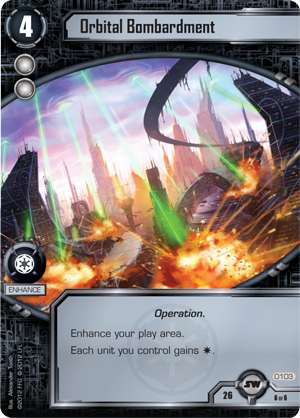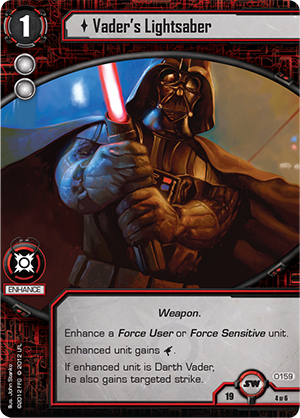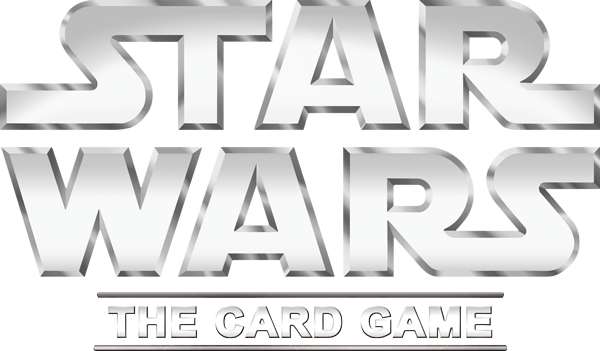
The Flow of the Force
Guest Writer Zach Bunn Explores Hand Cycling in STAR WARS (TM): The Card Game

In Star Wars, the Force permeates all things, binding them together. The flow of its power is always present, moving throughout the galaxy. The power of the Force is even more apparent in Star Wars™: The Card Game. Today, guest writer Zach Bunn explores how you can take full advantage of the flow of the Force.
Reserves of Power
From the first time I played Star Wars: The Card Game, there was a subtlety to the design of the game that I loved. I’ve played my fair share of card games over the years, yet Star Wars somehow captures the essence of my favorite galaxy far, far away better than I’ve experienced in other games. It has a certain ebb and flow that is hard to describe or define, but it definitely gives the game the right amount of Star Wars texture.
There are several mechanics in the game that create this feel, but I attribute a lot of it to the draw mechanic. The concept of a reserve value works brilliantly in the game, forcing players to draw (or discard) to their reserve every turn. Cards have double utility, both as a card and as a contribution to an edge battle, creating a sense of cycling and what I call the flow of the game. While this flow gives the game its Star Wars feel, it is also one of the most important and deceptive elements of the game.
The Flow
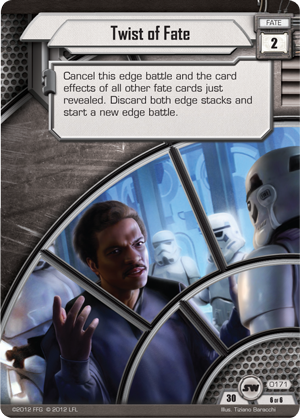 Have you ever played an opponent and wondered how they always had Twist of Fate (Core Set, 157) at the right moment? Or that they somehow always end up with Darth Vader (Core Set, 35) and Emperor Palpatine (Core Set, 51) on the table? I may be inclined to blame fate, but if I step back and look at a game when I want to blame luck, nine times out of ten, my opponent just took advantage of the flow of the game.
Have you ever played an opponent and wondered how they always had Twist of Fate (Core Set, 157) at the right moment? Or that they somehow always end up with Darth Vader (Core Set, 35) and Emperor Palpatine (Core Set, 51) on the table? I may be inclined to blame fate, but if I step back and look at a game when I want to blame luck, nine times out of ten, my opponent just took advantage of the flow of the game.
It’s simple. If you draw more cards, your deck will be more consistent. Drawing more cards also means that if a specific card would massively increase your chances of winning, you’ll be more likely to draw it.
Consider that the average game of Star Wars lasts four to six turns for each player. Let’s look at two scenarios with the same deck. In both scenarios, let’s assume you are running ten objective sets, making your deck a fifty-card deck.
In the first scenario, let’s say you average three cards in hand after discarding your optional card each turn. This means you are drawing three cards a turn. If the game lasts six turns, you’ll see twenty-one cards from your deck (six cards in the first turn, and three cards every turn after). If it lasts four, you will only be seeing fifteen cards from your deck.
In the second scenario, let’s say that you are able to get to one card in hand after discarding for your optional discard. This means you are drawing five cards a turn. If the game lasts six turns, you’ll see thirty-one cards from your deck. If it lasts four, you will see twenty-one cards from your deck.
Hopefully my point is becoming obvious. In the above scenarios, the second player at turn four is going to see as many cards as the first player saw in an entire six-turn game! The chart below shows the impact that the number of cards you draw has on a game.
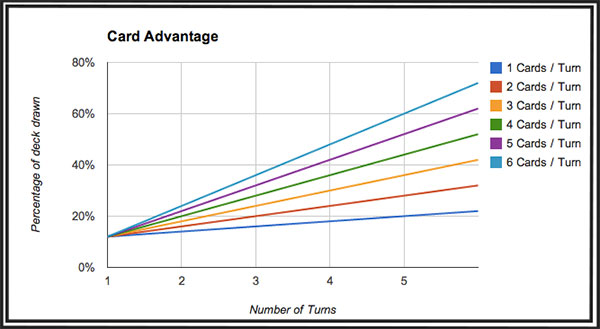
This chart shows the percentage of your deck that you will see based on the average number of cards that you are drawing each turn. The difference between drawing two and drawing five cards on turn five is the difference between seeing 28% of your deck or 52% of it!
Once you realize and understand the “flow” of the game as well as its importance, it drastically changes the level at which you play Star Wars and how you value cards. Let’s take a look at valuing cards with flow in mind.
Judge Me by My Size, Do You?
In a lot of card games, if I draw a really great card I can’t use yet, I keep it in my hand and hope my opponent can’t discard it. In Star Wars, however, the cost of holding a less-than-optimal card in your hand is huge. It’s important to evaluate a card based on its general usefulness, but if you don’t consider its usefulness in conjunction with the timing of when you draw it you will only be seeing part of the picture. Let’s evaluate a few cards.
First up, we have Orbital Bombardment (Core Set, 103). This is a great card. It ends up in a lot of the top dark side decks because it’s in the Imperial Command objective set. If we were rating this card in a vacuum, we’re very likely to give it a really high score. It has the ability to close games and even has two force icons just in case you have to drop it in an edge battle. Even the threat of Orbital Bombardment can force light side players into more defensive situations later in the game. I would rate this card an eight out of ten.
Next, we have Vader’s Lightsaber (Core Set, 159). This is a fine card, letting you give a unit an extra unit damage for one resource. In early turns it’s common to have one resource you don’t know what to do with and this is better than nothing. This is also a solid card for an edge battle, with two force icons. It’s certainly not a game-altering card every time, but can be if you draw it at the right time. I would rate it a five out of ten.
But timing can affect a card’s value dramatically. Let’s say you just started a game. Odds are, you don’t want to see Orbital Bombardment on that draw, and if you had to choose, you would rather see the Lightsaber. So, we have introduced timing to the valuation of a card. You might be thinking to yourself that a card’s value is obviously higher if you draw it when it is useful. But my point has yet to be fully made.
Let’s presume that you do draw Orbital Bombardment. There is very likely no use for this card for at least three turns. What do you do? I’ll tell you what I do: I dump it like illegal cargo when Imperials are boarding my ship!
Do or Do Not
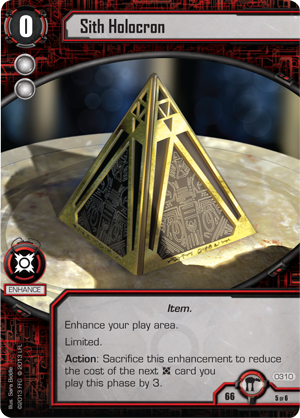 Ultimately, a principle I hold to rather tightly is if I don’t plan to use a card within a turn, I find a way to get rid of it. Whether that means discarding it or dropping it in an edge battle, I won’t let it clog up my hand!
Ultimately, a principle I hold to rather tightly is if I don’t plan to use a card within a turn, I find a way to get rid of it. Whether that means discarding it or dropping it in an edge battle, I won’t let it clog up my hand!
It can be extremely difficult to follow this rule, because sometimes keeping Emperor Palpatine even though you can’t afford to play him might seem logical. Who knows, you might draw a Sith Holocron (Escape from Hoth, 310) or you might need him for an edge battle… In the words of Admiral Ackbar, “It’s a trap!” Palpatine is great for winning an edge battle and he should be used quickly if you aren’t certain you’ll be able to play him.
Of course, sometimes rules need to be broken. While getting rid of cards is a great principle, there are certainly exceptions. Toward the end of the game the law of diminishing returns comes into play since you’ve already seen most of the cards you’re going to see. You just need to keep evaluating your hand, and the possibility of drawing the cards you need.
Until next time, may the Force be with you.
Zach Bunn
Thanks, Zach!
Zach Bunn is a Star Wars fanatic and a lead member of Team Covenant. You can find a piece of the Star Wars community at teamcovenant.com and more of Zach’s writing at teamcovenant.com/zachbunn/. In coming weeks, stay tuned for more Star Wars guest articles from Zach and other writers!
…

